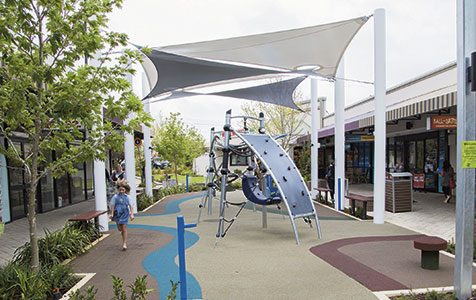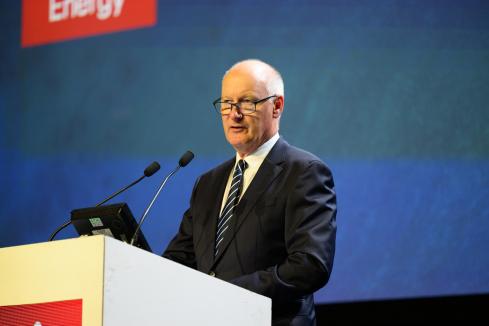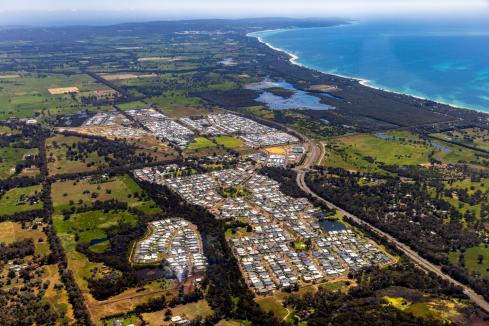Property group Hawaiian is building on its investment in the community to turn its neighbourhood shopping centres into meeting places.


HAWAIIAN chief executive Russell Gibbs has a blunt message for the new federal government -- penalty rates have no place in contemporary retail.
The head of one of the state’s biggest and arguably highest-profile private property owners presides over a network of nine shopping centres across Perth.
Hawaiian has focused on forging strong bonds with the community to differentiate it from the large institutional owners that dominate the national retail sector, but it’s Mr Gibb’s appreciation of the changing role of shopping centres in contemporary society that defines the group’s strategy.
“You can’t have penalty rates in hospitality on a public holiday, that’s the nature of hospitality … people go out when they have time off,” Mr Gibbs said.
“We don’t live in that type of a society any longer; we live in a place of deregulated trading hours.”
It’s a stance that acknowledges the substantial wages bill retailers shoulder to trade on weekends or public holidays, in addition to customer expectations.
It’s this appreciation of community and the demands of shoppers that have led Hawaiian’s investment and growth strategy since it was founded by the Wen family in 1993.
Hawaiian and Stan Perron’s Perron Group are the two largest private retail property owners in Western Australia.
While Perron Group maintains a low profile, Hawaiian has worked hard to build its brand, predominantly through its support of community organisations ranging from the Claremont Tigers to Youth Focus.
This commitment to the community is evident in all aspects of the Hawaiian business, right down to the design of its shopping centres.
Mr Gibbs refers to the Hawaiian centres as the “third place”, a leisure space that complements home and work.
“If we can become the third place that you want to visit then we will be in a pretty good space,” Mr Gibbs said.
“Human nature is driven through need, the need to consume food but we also need to be social, so we are transforming our centres into far more social meeting places.
“It’s not just about having a park bench that has been concreted into the ground and has chewing gum stuck underneath it; it’s about creating a place where people want to hang out.”
At its Mount Hawthorn Centre, The Mezz, Hawaiian has closed off the internal road that once ran through the property and developed a children’s play area alongside the newly opened Peasant’s Table.
And Hawaiian has put its own money behind the centre’s restaurant to ensure its success in the early years.
“We had a very clear vision of what we wanted that centre to be, we wanted it to be a meeting place we wanted it to have a Mediterranean feel and that married up with all the demographic studies we had done,” Mr Gibbs said.
“We went out and spoke to retailers and a whole range of food and beverage operators, and they either couldn’t see the vision or didn’t want to buy into the vision … because it was in a shopping centre.
“We find locations that have a similar demographic and similar climate and we look at what is occurring and bring it back and try to adapt that trend to our environment. So what you see at The Mezz is an adaptation of a concept from LA.”
It’s one way Hawaiian is countering the slowdown in discretionary spending in WA and keeping its shopping centres fresh.
Work has already started on a $30 million upgrade to the group’s Bassendean Shopping Centre and the Noranda and Park Centre properties are slated for similar redevelopments.
Hawaiian said each redevelopment reflected the unique attributes of its local community.
Hawaiian’s acquisition of Melville Plaza for $29 million earlier this year gave it a network of properties within a 10-kilometre radius of the CBD.
It’s a geographical spread that captures most of the inner metropolitan suburbs.
Mr Gibbs said that, over time, the group would slowly expand its reach through further acquisitions. For the moment, however, the focus of its retail strategy was making the most of its nine centres, six of which were neighbourhood centres.
These properties, many of which are anchored by Coles, have experienced strong growth in grocery sales in the past year -- up into the double digits in some centres.
And demand for service-based retailers such as hairdressers and beauticians remained strong.
The fashion category has been hardest hit since the GFC, but Mr Gibbs said the broader operating costs for retailers in WA were a bigger factor than rents.
“The other things that make up (a retailer’s) occupancy costs now --wages, utilities, chargers, cost of goods overall -- are a lot higher,” he said.
“I don’t think it’s necessarily rents are unaffordable; I think everything else has got unaffordable.
“Before we start attacking rents I would like to see people improve customer service, improve merchandising and develop their online strategies to complement their in-store strategies.”


















